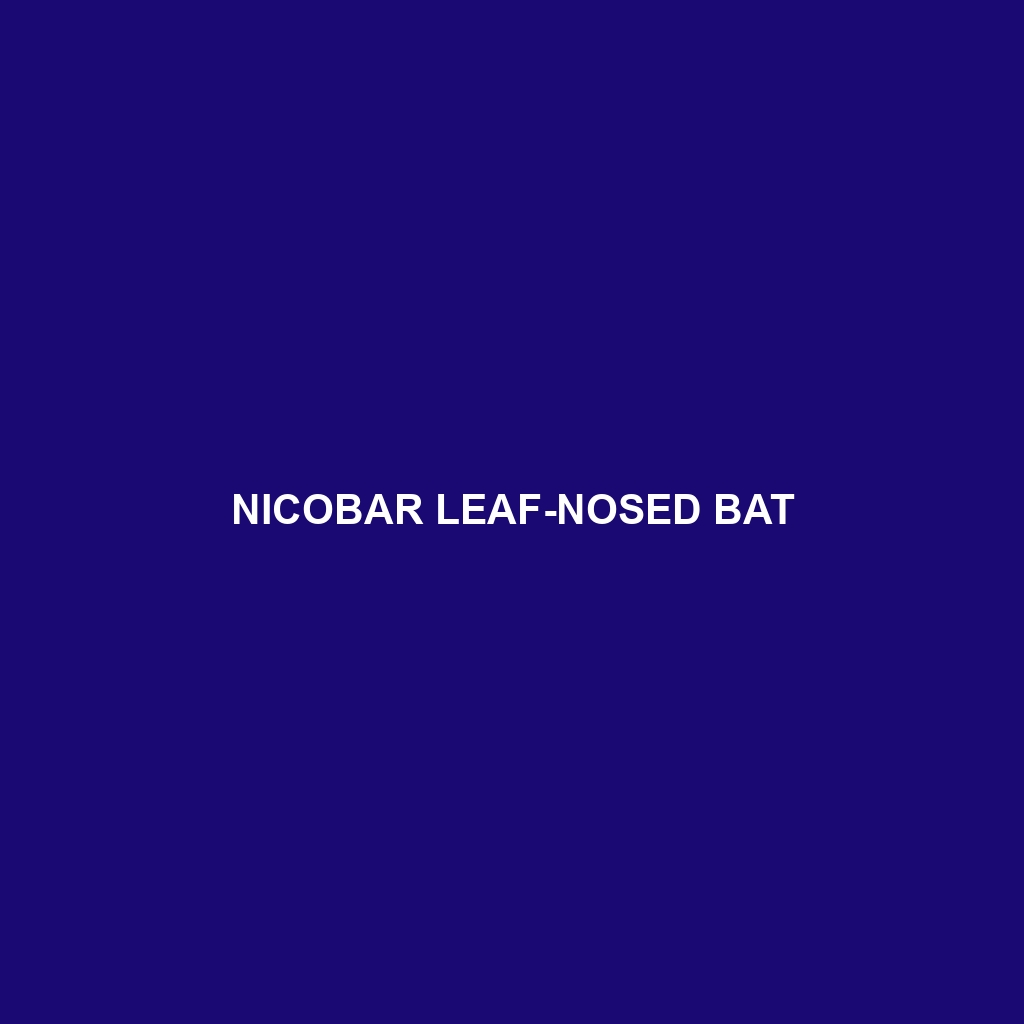Nicobar Leaf-nosed Bat
Common Name: Nicobar Leaf-nosed Bat
Scientific Name: Hipposideros nicobariensis
Habitat
The Nicobar Leaf-nosed Bat primarily inhabits the tropical forests of the Nicobar Islands, located in the Bay of Bengal. These bats thrive in a variety of environments, including humid and moist subtropical or tropical forest regions. Their presence has also been noted in coastal areas where dense tree cover provides ample roosting opportunities.
Physical Characteristics
Adult Nicobar Leaf-nosed Bats typically measure between 8 to 12 centimeters in body length, with a wingspan that can extend up to 30 centimeters. Their fur is a striking combination of olive-brown and gray tones, providing excellent camouflage within their forest habitats. A distinctive feature of this species is its leaf-shaped nose, which aids in echolocation and is a primary characteristic for identifying these bats.
Behavior
Nicobar Leaf-nosed Bats are known for their nocturnal habits, becoming active at dusk. They exhibit fascinating social behaviors, often roosting in colonies of several individuals. These bats are skilled flyers, utilizing their echolocation to navigate through dense vegetation while hunting for insects. Their unique communication patterns, which include a series of vocalizations, enhance their social structures.
Diet
The diet of the Nicobar Leaf-nosed Bat primarily consists of insects, with a particular preference for moths and beetles. Their foraging behavior often involves agile maneuvers to capture prey mid-flight. This species plays a crucial role in controlling insect populations, highlighting their significance in maintaining ecological balance.
Reproduction
Breeding typically occurs during the warmer months, with females giving birth to a single pup after a gestation period of about 2 to 3 months. The pups are nourished with milk until they are weaned and can begin foraging independently. Parental care is prominent, as mothers are known to roost with their young to provide protection and warmth during early development.
Conservation Status
The Nicobar Leaf-nosed Bat is currently classified as vulnerable by the IUCN Red List. Habitat loss due to logging and human encroachment continues to pose significant threats to their populations. Conservation efforts are crucial to ensure their survival, including habitat protection and monitoring programs.
Interesting Facts
This species is notable for its unique facial structure, which not only aids in echolocation but also denotes its evolutionary adaptations. Moreover, the Nicobar Leaf-nosed Bat is often used as an indicator species for assessing the health of tropical forest ecosystems, showcasing its ecological importance.
Role in Ecosystem
The Nicobar Leaf-nosed Bat plays a vital role in its ecosystem by acting as an insectivorous predator. Its feeding habits help regulate pest populations, which can benefit agricultural practices in surrounding areas. Additionally, their droppings provide essential nutrients that contribute to soil health, indirectly supporting plant growth and overall forest biodiversity.
